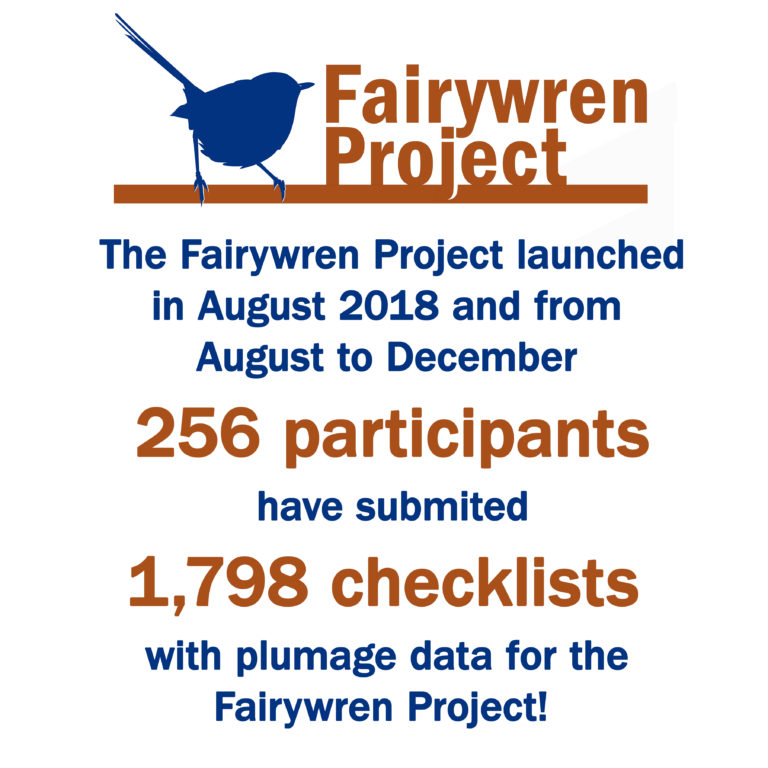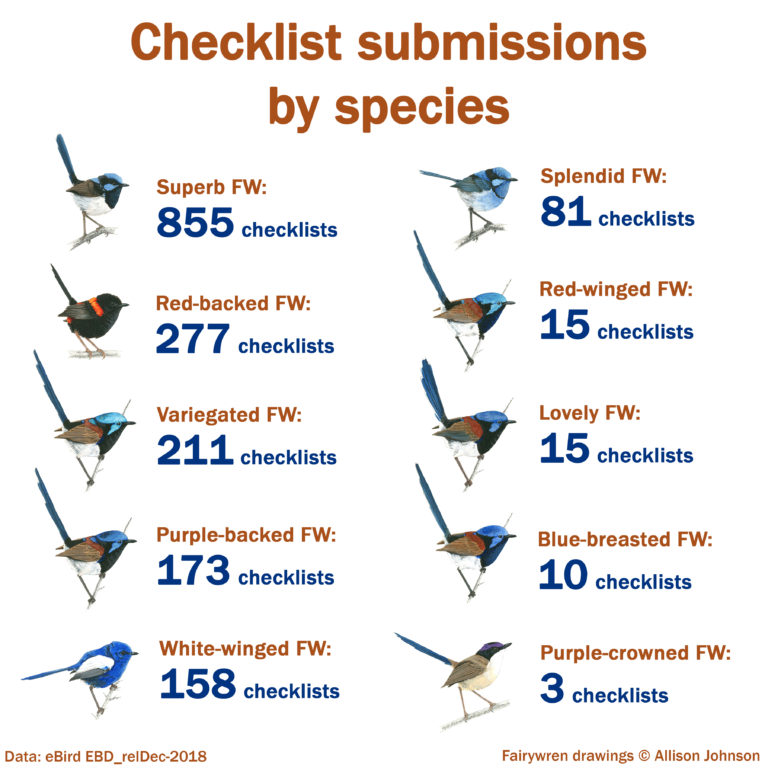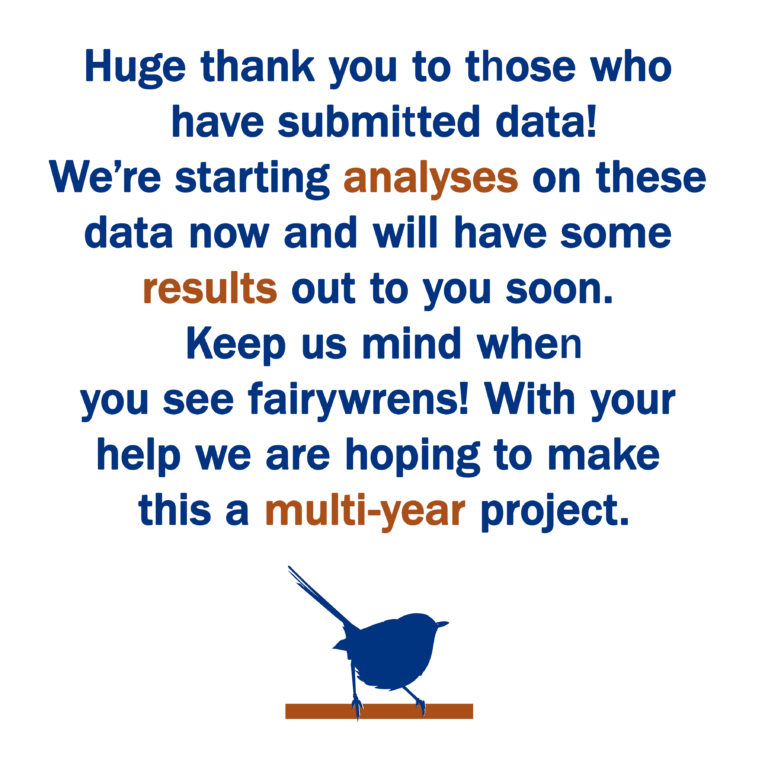Our August-December data update has arrived! We've pooled all of your sightings during this period and are extremely pleased to report that our numbers have grown way more than we ever expected they could. We're up to 256 participants and 1798 checklists with plumage and/or group data! Thank you all very much for your effort and contributions to the project, every single sighting helps!
You can find the social media slides we've made for this update below. Now that we have the data in hand we're starting to analyze it and will look to have some results to you in a month or two. In the meantime, expect sooner than that an update on some of our findings from the transect we did at the beginning of December. We're working on those analyses currently.
This is the time of year when most fairywren males are moulting out of bright plumage as breeding is coming to a close. Although in Superb Fairywrens and Red-backed Fairywrens, old males can sometimes maintain bright plumage year-round. There's reason to believe this is probably true for the other species as well. As you're out birding, gardening, or walking the dog, keep us in mind! All fairywren sightings are important to us, but we're especially curious this time of year how common it is for males to moult from bright plumage to bright plumage, how many species this occurs in, and how it differs across environments.
Thank you for your participation and interest! Looking forward to sharing some results with you soon.
-Joe and Allison




